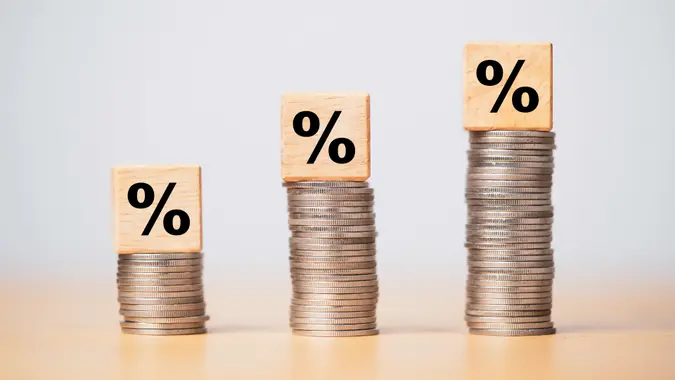I Kept $10,000 in a Regular Savings Account for 6 Years — Here’s How Much Money I Lost

Commitment to Our Readers
GOBankingRates' editorial team is committed to bringing you unbiased reviews and information. We use data-driven methodologies to evaluate financial products and services - our reviews and ratings are not influenced by advertisers. You can read more about our editorial guidelines and our products and services review methodology.

20 Years
Helping You Live Richer

Reviewed
by Experts

Trusted by
Millions of Readers
You know that warm, fuzzy feeling you get when you see money sitting safely in your savings account? Hate to break it to you — but that comfort might be costing you.
While it feels like you’re doing the responsible thing by letting your cash chill in a regular savings account, the truth is it’s quietly losing value over time.
GOBankingRates spoke with Seymen Usta, CEO and interior design specialist of Seus Lighting, on why your “safe” money might not be so safe after all. Here’s what he had to share.
Earning Under $20 in Interest Over 6 Years
“For many years, I kept my savings account like a bunker — secure, untouchable and reassuring,” said Usta.
He parked $10,000 in a regular savings account and did nothing with it for six years, thinking he was making a wise, prudent decision. The bank was paying 0.03% interest annually, which seemed better than the nothing he would have got for no action.
Read More:
“The reality was cruel: My account earned me under $20 in interest over those six years,” Usta revealed.
And during that time, following inflation, the purchasing power of his cash was quietly eaten away year after year. By the time the dust settled, when assessing the inflation, that original $10,000 had the purchasing power of approximately $8,200.
Squandered Opportunity
Also painful was all the opportunity Usta said he squandered.
“Had I put that same amount into a simple S&P 500 index fund, that averaged around 10% each year, I would have walked away with more than $18,000,” Usta said.
So, in truth, from a missed opportunity perspective, he said he lost almost $8,000. Not due to making a bad investment, but rather because he didn’t invest at all.
“Worse still, it isn’t even speculative — it was cash just lying dormant waiting for something to do,” Usta added.
Now, He Follows a Simple Framework
These days, Usta follows a simple framework that helps his money serve actual goals.
“For immediate needs or emergencies, I use a high-yield savings account — still safe, but with better returns,” he noted.
For short- and medium-term goals, he opts for low-risk options like money market funds or short-term bond ETFs. And, for anything he won’t need access to for three or more years, he puts into index funds with automatic rebalancing.
“It’s nothing fancy. It’s just good financial habits,” Usta said. “I also now do a financial audit quarterly and, honestly, all it takes is 15 minutes of asking, ‘Is this money growing, protecting, or just sitting?'”
He said this one single question has moved him to putting thousands of dollars in smarter places.
“Most importantly, I’ve stopped idolizing liquidity at the expense of growth,” Usta explained. “I now tell people: A savings account is a great parking spot, but it isn’t a home. Move your money purposefully, or you will pay the price quietly.”
 Written by
Written by  Edited by
Edited by 

























